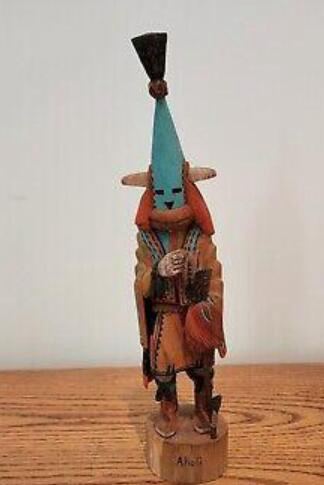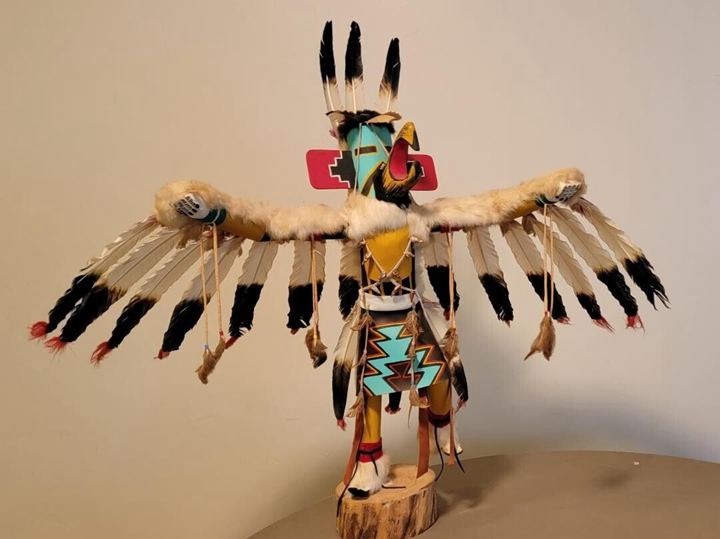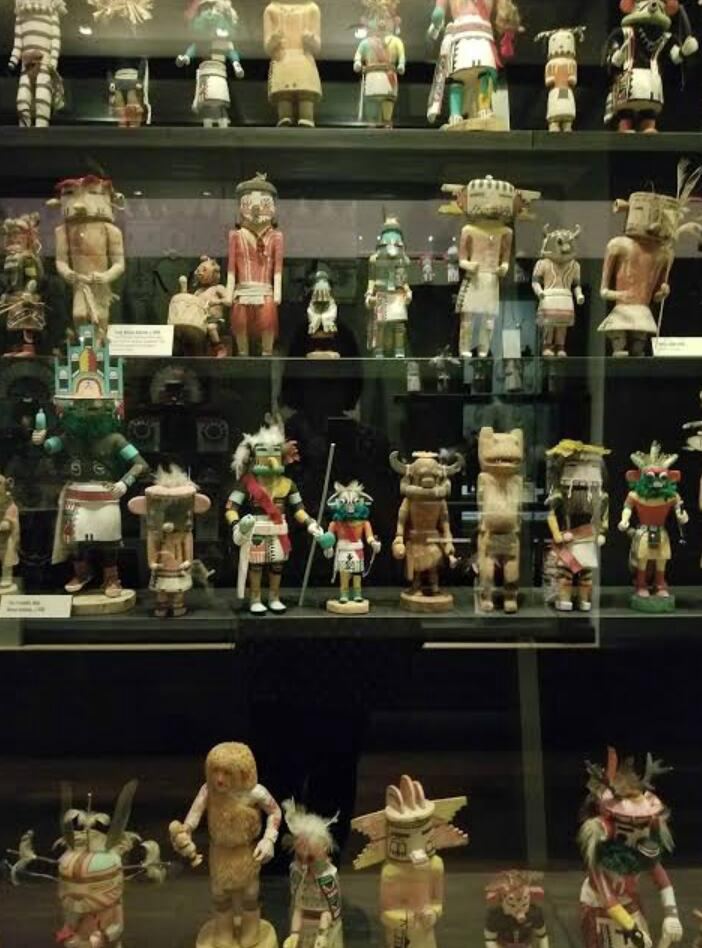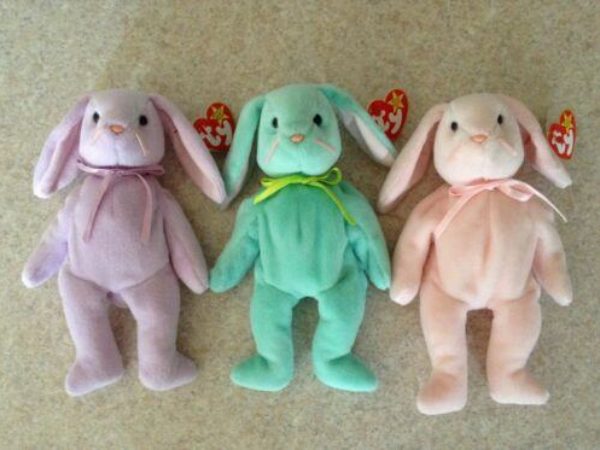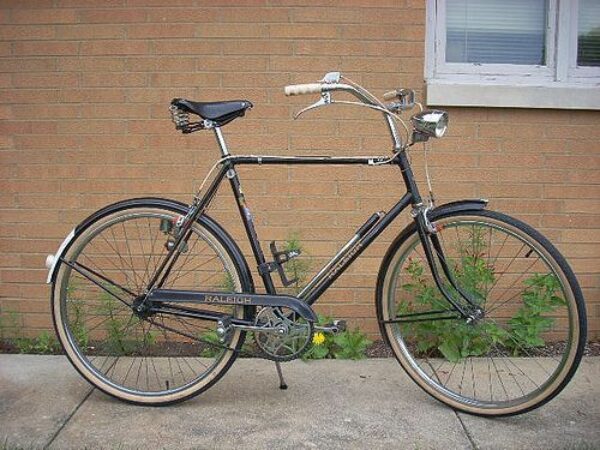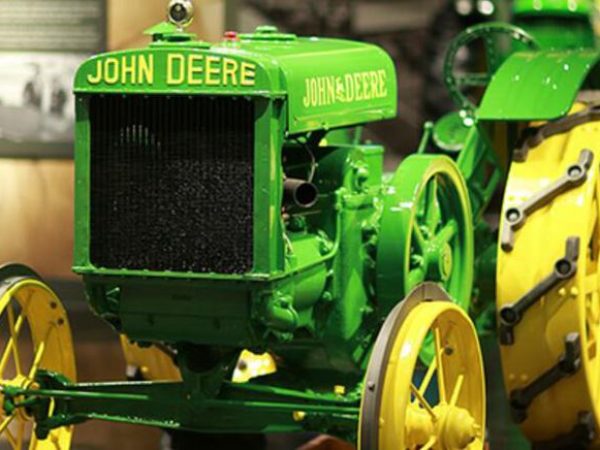Kachina dolls are symbolic and ceremonial items gifted to Native Americans, specifically Hopi girls, at different stages of their lives. These traditional items aren’t just dolls; they’re history keepers. They’ve been used for hundreds of years to signify the strong connection between the Hopi tribes and nature.
The value of a Kachina doll isn’t tied to the economy or its beauty but rather the meaning and history it holds. Here, we’ll explore the rich history, types, and meaning of kachina dolls. Expect to be introduced to a comprehensive guide on identifying and valuing these significant pieces of Native American culture.
Table of Contents
What are Kachina Dolls?
Kachina Dolls, also known as Kastsinas, are traditional toys or collectibles sold to tourists looking for the right memorabilia to express the Native American ways. Today, the oldest kachina doll was discovered to be hand crafted in the 1700s.
Each century since the early 1700s, girls have been gifted these unusual-looking dolls of Native American art.
The term “Kachina ” means spirit. It was coined from the Hopi word called Kachi. According to Native American indigenes, these dolls symbolize the spirits of nature, known as Ketsinam. These tribes believe that the different aspects of nature can be possessed or personified by the spirits of the dolls. Apart from the dolls, the everyday religious practices of the adult Hopi incorporates the Ketsinams. For instance, on auspicious occasions, men of the tribe have to dress up as these spirits and perform their usual dances, and sometimes they hold dolls carved after the Ketsinam being celebrated.
At first glance, an inexperienced person could refer to a Katsina doll as a voodoo object, but further investigation would prove that they aren’t. Different Kachi dolls symbolize unique natural factors like crops, ancestors, rain, wind, and even animals.
History of the Kachina Doll
The specific history of a Kachina doll depends on the tribe using them. These dolls are not only used by the Hopis but also by the Aguna, Laguna Pueblos, and the Zuni. All of these tribes believe the Kachina to be their cultural heritage.
The Hopis claim the Spirit Kachinas revealed themselves by emerging from deep earth. The ancient Hopi culture believes these spirits now reside at “the place with the snow on the very top.” This ” place” is none other than the peak of Mount Humphreys . On various ceremonial occasions, the Hopi priests and men visit this sacred land and discreet underground kivas to offer the ceremonial dances to the Spirits. In return, the Spirits gift the tribe rain and other individual needs. As Jerusalem is to the Christians or Mecca to the Muslims, Mount Humphrey is to the members of the Hopi Tribe.
The Kachina dolls are modelled after the Kachina society members in their ceremonial regalia. The early people of Hopi believed that praying with these dolls could indirectly relay their wishes to the spirits. The Hopi beliefs also contributed to shaping other aspects of Native American culture. When you collect Hopi dolls, you must be ready to learn about the cultural significance of the doll you aspire to own.
Not long after the Kachina dolls were being created for sales across the southwest in the late 1800s, tourists became interested in knowing more about the Native American culture. Expectedly, the Hopi and the Zuni Intensified their production. The Keams Canyon, a prominent Native American trading post, stocked extensive inventories of Hopi items, including the Kachina dolls, jars, and pottery tiles.
In addition to the boosted tourism and sales, artists began traveling in droves to witness the Hopi tribe and their cultural activities. Talented Maynard Dixon was a frequent visitor of Hopi. His first visit was in 1903. However, his most documented visit must be his four-month trip to Hopi in 1923. During this trip, he captured the Hopi societies with paint and pencil. His famous work, “the Kachina Maker,” shows a male carver completing a Kachina Doll at Walpo. Contemporary artists like Francis Livingston and Ed Mell also depicted Hopi Kachina dolls and customary dancers in their paintings.
Identifying Authentic Kachina Dolls
When you check for images of Hopi Kachina dolls online, you’ll be presented with old-style dolls. However, we can bet that you’ll unknowingly come across at least two fake Hopi Kachina dolls. Unscrupulous vintage items sellers have made it a norm to pass off old-style carved dolls as antiques or vintages. When identifying a doll, you must do so diligently to determine authenticity.
The most apparent aspects of a Kachina Doll are its materials, body style, facial features, coloration, clothing, headdress, and decorations. These can also help you ascertain whether or not a doll is an original Hopi piece.
Materials
Authentic Kachina dolls were produced from the roots of cottonwood trees. The Hopi tribe believes that cottonwood trees have spiritual power because they always grow next to a source of water—even in the driest clime. They’re also preferred for these dolls because they have very little shrinkage. The earliest set of dolls produced was carved in one piece. Later on, the carvers began to attach bases using glue.
Antique Kachina’s carvers used aniline paints and embellishments such as shells, straws, sticks, cotton, corn husks, leather, yarn, and feathers.
Body Style
When the first kachina dolls were produced in the 1800s, they were straightforward in structure and plain in design. The carvers placed the arms very close to the body. The rarest kachina dolls have no fingers. They are very expensive. In 2017, one of these fingerless “tummy-warming” dolls was sold for $20,000. This valuation is expected for usual, rare, or large dolls in pristine condition.
The body style of Kachina dolls evolved from fingerless arms around the stomach to the sides, then straight out. Fingers were added later on, and the arms were depicted to be in action.
Facial Features
Kachina dolls can either have painted eyes or carved pop eyes, which are glued to the features. Most one-piece kachina dolls have round, half-moons, pot-hooks, or rectangular painted eyes. At the same time, the glued dolls have their eyeballs carved separately. The figure’s noses are either carved or painted. However, unlike the eyes, which look realistic either way, the noses rarely look real except when expertly carved into the wood.
Other noticeable facial features include the ears, which appear large with red paint, feathers, bird wings, hair, and horns. Some carvers attach real animal horns to their dolls to make them more realistic.
Coloration
In the 1800s, kachina dolls were painted with natural mineral paints. The common colors used were dark sage green, red ochre, pink, and yellow. You can use the color of a Kachina doll to estimate its age. If your doll has a historic mineral pigment, it could be one of the oldest dolls as these colors are very difficult to imitate or reproduce.
Some older dolls with mineral pigment can be found in the Millicent Rogers Museum, the Heard Museum, and the Northern Arizona Museum. If you suspect you have an older doll, you can compare it with the well-documented antique dolls at these museums.
Clothing and Decorations
Kachina dolls have different unique wears. These clothes are either carved with wood or made from fabrics. Hopi dolls rarely have clothing adornments. In uncommon cases, they could be adorned with calico or hard spun cotton clothes. Other decorations include hand-painted or metal jewelry, unusual facial features, ruff around the neck, furs or feathers, and a few times handheld objects or props.
Valuation of Kachina Dolls
The value of an antique kachina doll is dependent on multiple factors, including the type, age, size, condition, rarity, and provenance.
Dolls carved in the 1700s and 1800s are generally the most expensive. These pieces are rarer than those produced during and after the twentieth century. The older and contemporary dolls are valued more, especially if they have unconventional intricacies.
Types of Kachina Dolls
There are over a thousand types of Kachina Dolls. These dolls are carved in unique positions like kneeling, dancing, praying, or other actions. Their kind is dependent on what or who they represent. These dolls were carved to represent people, insects, animals, birds, plants, and popular forces of nature.
Some of the common representations of Kachina Dolls include:
Animals
Ogres, eagles, badgers, mice, deers, rabbits, goats, dogs, foxes, mountain sheep, coyotes, deer, and buffalo are some of the most represented animals. Eagle Kachina dolls have their characteristic feathers as they depict the rulers of the sky. At the same time, the Ogres kachina dolls are often used to scare bad-mannered children. The deer kachina doll stands for abundance, while the buffalo doll is revered for its ability to clear off worries and bad thoughts.
There’s a prominent black ogre kachina doll, known as Chaveyo or Natask, with a black head, spikes, and big eyeballs. This black ogre doll is most feared by naughty children.


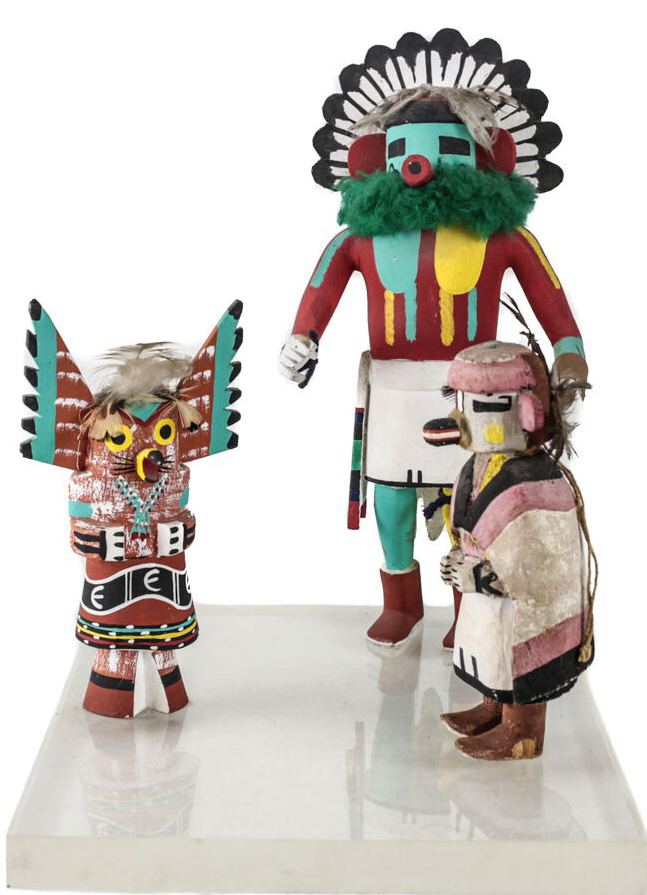
People
These kachina dolls are carved ad warriors, priests, Vikings, hunters, clowns, mothers, runners, hoop dancers, or children.
Kachinas carved as warriors or guards represent the men of valor who played important roles before, during, or after war. These Kachinas sometimes have bows or yucca whips. They are known as the Wuyak-kuita, Angwus ( Crow Man), or the Wupamo. On the other hand, clown kachina dolls are carved to represent the individuals who provide comic relief during the Hopi dance ceremonies. The Runners are another set of people who are imitated as dolls. These people run with the men during the ceremonies. According to the Hopi laws, the runners have to beat the men to be rewarded, and if they lose, they are punished.
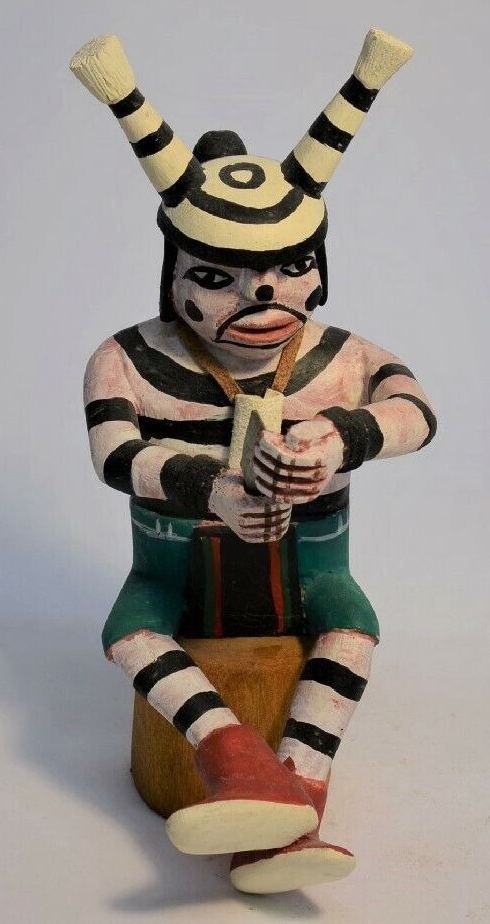


Forces of Nature
These dolls represent the sun, wind, cloud, moon, stars, and rain. The Chasing Star kachina doll represents the stars and planets. They depict the spirit that helps the fallen rise back up. The Omowuh doll represents the rain bringers.

Age, Rarity, and Provenance
Provenance describes the ownership history of the doll. A doll with a well-documented history is more valuable than a doll without. Research your doll’s provenance in writing to make batter returns from the sale.
As mentioned earlier, kachina dolls made before the twentieth century are rare. These dolls have unique designs, carving styles, color usage, and facial features. As each decade passed, carvers learned how to make multiple versions of a doll, making it less rare than the earlier carved kachinas.
Condition
Antique Hopi Kachina dolls cannot be in new condition, as age must have affected them. A close examination must be carried out to assess the doll’s situation. This assessment would reveal cracks, splits, paint overs, or broken parts.
The most valuable dolls have little wear. Inspect areas on the dolls that have been handled over the years, like the sides, heads, or hands. If you notice a white peg, it might indicate a change or repair of the appendage. Areas with broken or chipped appendages would show less or more oxidation than the other normal side. For instance, exposed cottonwood (area of breakage) turns a brown or honey color with time, whereas a complete doll has a consistent coloration.
The ears, large eyes, and nose often have more chips or scrapes than other parts of the dolls, as they are protruded and more susceptible to damage. If the doll has had its feet, arms, or protruded parts reglued, the value decreases. However, this kind of wear is common in vintage Hopi dolls.
When assessing the condition, here are some pointers that suggest your kachina dolls are fake or not as old as they are claimed to be.
- Two or more identical dolls in a single collection: if you come across a single collection and more than two have similar carving styles or features, it could mean it is a copy. Sometimes, Hopi Kachina doll forgers try to mimic designs of valuable pieces in a collection to make more money. The fact is that only one of these three identical pieces may be authentic.
- Wear from mechanical aging:check if the wear on the doll is due to human usage or forging mechanical factors. We recently discovered that sandpaper is sometimes used to make a new doll appear vintage.
- Newer paints:A backlight examination can help you detect if a doll’s paint is new or antique. This examination can also help you detect if an item has been repaired or overpainted.
- Zero Wear: If your doll appears to have no damage, scrapes, or missing parts, it could indicate that it is not an antique or vintage but rather an old-styled doll. As we all know, Hopi dolls were carved for children in the early days; hence it will be pretty unusual for a child’s doll to be without breaks, wear, or missing appendages. If you cannot prove that the doll has been restored, it is likely a fake.
Price of Hopi Kachina Dolls
Antique or vintage Hopi Kachina dolls can sell for as high as $250,000 and as little as $100. It all depends on the emotional value of the doll, condition, age, materials, carver, decoration, or demand.
Regular mass-produced kachina dolls cost less than $500 most times. Only if a doll is precious can it cost more than a few thousand dollars.
Appraising a Hopi Kachina Doll
It is always best to leave a chore like this to the experts. If you suspect your kachina doll is highly valuable, we would advise hiring a qualified appraisal to help you confirm its authenticity and price. In-person appraisals usually provide more accurate answers than online or virtual appraisals. However, if it’s impossible to find a local appraiser in your state, you could first check out local museums or settle for online antique reviews.
It’s always best not to sell off your appraiser items to the same appraiser who gave you a price, as this could be a conflict of interest. Either the appraiser undervalued it or is trying to purchase a scarce doll.
Organizations that offer antique appraisals online include:
- Native American Art Appraisals, Inc.
- AntiqForum
- Indian Territory
- Country Living
Getting a sense of Hopi Kachina Value
Out of the many hundreds of Hopi Kachina dolls that were carved in the 1800s and 1900s, only a few are worth a lot. If you’d like to get an idea of your kachina’s value, look up similar dolls online. Pay more attention to the price of sold dolls than those still listed for sale.
eBay is an excellent tool to check up and compare the prices of Hopi Kachina dolls.
Here are a few samples of sold kachina dolls values
A recently sold “aholi ” Kachina doll. It was sold for $300.
This piece is hand-carved with painted facial features.
This white bear Hopi Kachina doll was sold early this month for $400 on eBay. Note that the white bear is regarded as one of the most potent warriors amount the Spirits.
An extra-large eagle Hopi Kachina doll sold last month for $1,500. The seller revealed it was in perfect condition, excluding a broken feather tip.
Hand-carved child eating watermelon Hopi Kachina doll. It sold for more than $500 on eBay early this year.
Collecting Hopi Kachina Dolls
Have you decided to start collecting Hopi Kachina dolls? Then we must congratulate you, cause you’ve made a fair decision. Whether you’ve made this decision because it appeals to you, is a reasonable investment, or for religious beliefs doesn’t matter. All are valid reasons.
When you start a collection of Hopi dolls, we advise you to go for the less popular antique designs. Here are a few tips to start with;
Check the details
Before purchasing an antique Hopi doll, look at the carving details on the sides and appendages of the doll. The best kachina dolls have fine carved feet and hands, with their fathers or decorator carved in, not glued. Details can tell whether it is worth it or not. Also, check if the carving is one piece or has different parts all glued together.
For more information on Hopi Kachina dolls, check for documented examples in Native American art books, as these are good learning mediums. Some of these books can be found online, in the library, or museums.
Frequently Asked Questions
Where can I buy Hopi Kachina Dolls?
If you’re ready to start collecting, you must buy from a dealer registered with the Antique Tribal Arts Dealer Association (ATADA). The website ATADA.org is a collector’s lifesaver, as only credible dealers are registered. With ATADA’s resources, you can connect with dealers who know what they’re doing, love their items, and can guarantee their authenticity.
You can also buy used vintage or antique Hopi dolls via online marketplaces like eBay, Etsy, 1stBibs, and Amazon. Another great resource to purchase all forms of Kachina dolls is Kachina House. This website hosts genuine kachina dolls, including Zuni and Navajo dolls.
Where Can I See Kachina Dolls?
Of course, not everyone can afford to buy rare, valuable traditional Hopi Kachina dolls. Not to mention that some Kachina dolls and North American art are never put on sale but are shown occasionally at museums and auctions.
The Heard Museum in Phoenix, Arizona, is a must-visit for all Hopi Kachina doll lovers. It hosts several kinds of American Indian art, including its music. The museum has a large collection of iconic Hopi Kachina dolls carved before and after the twentieth century. The collections are simply priceless.
Cross-section of the Hopi Kachina Dolls in The Heard Museum, Phoenix
Where are the Hopi people today?
The people of Hopiland can be found at the Hopi Village on the Third Mesa. The same place they’ve inhabited in Northern Arizona for over 1,000 years.
There you are!
Back to earth! We trust you’ve learnt the fundamentals of the Hopi Kachina dolls embedded in this article. You can start your journey into the Hopi tribe’s spirit dolls today by starting a research to know which collection you’d love to have or view at the nearest antique museum close to you.
